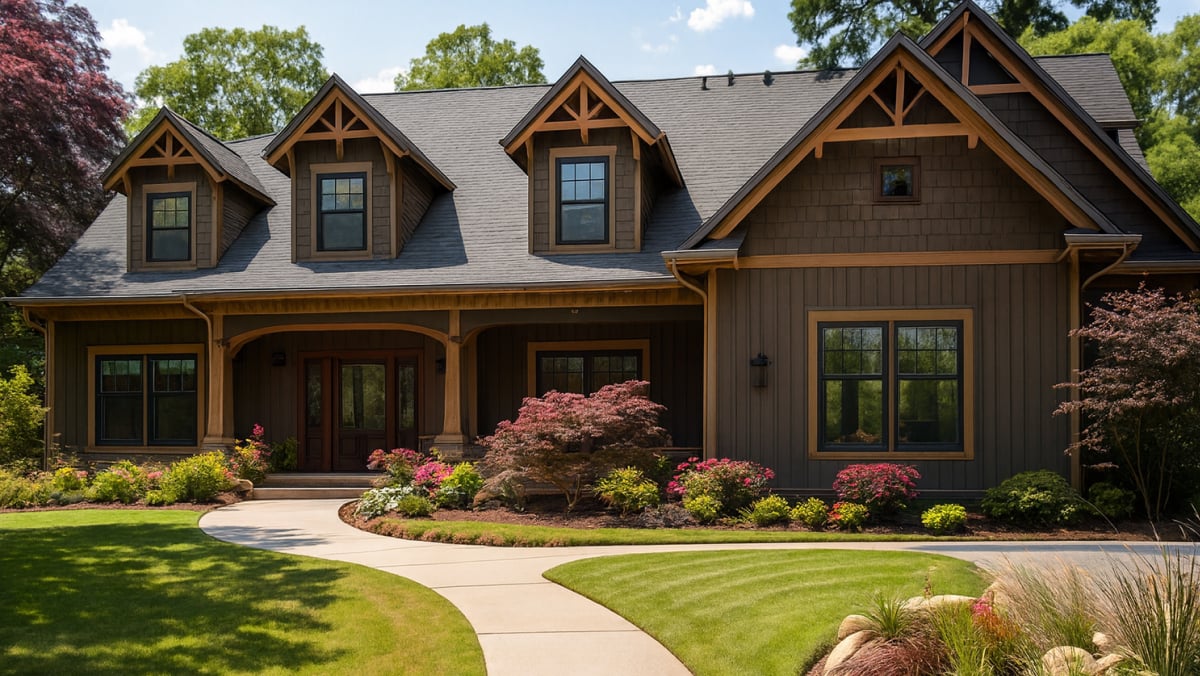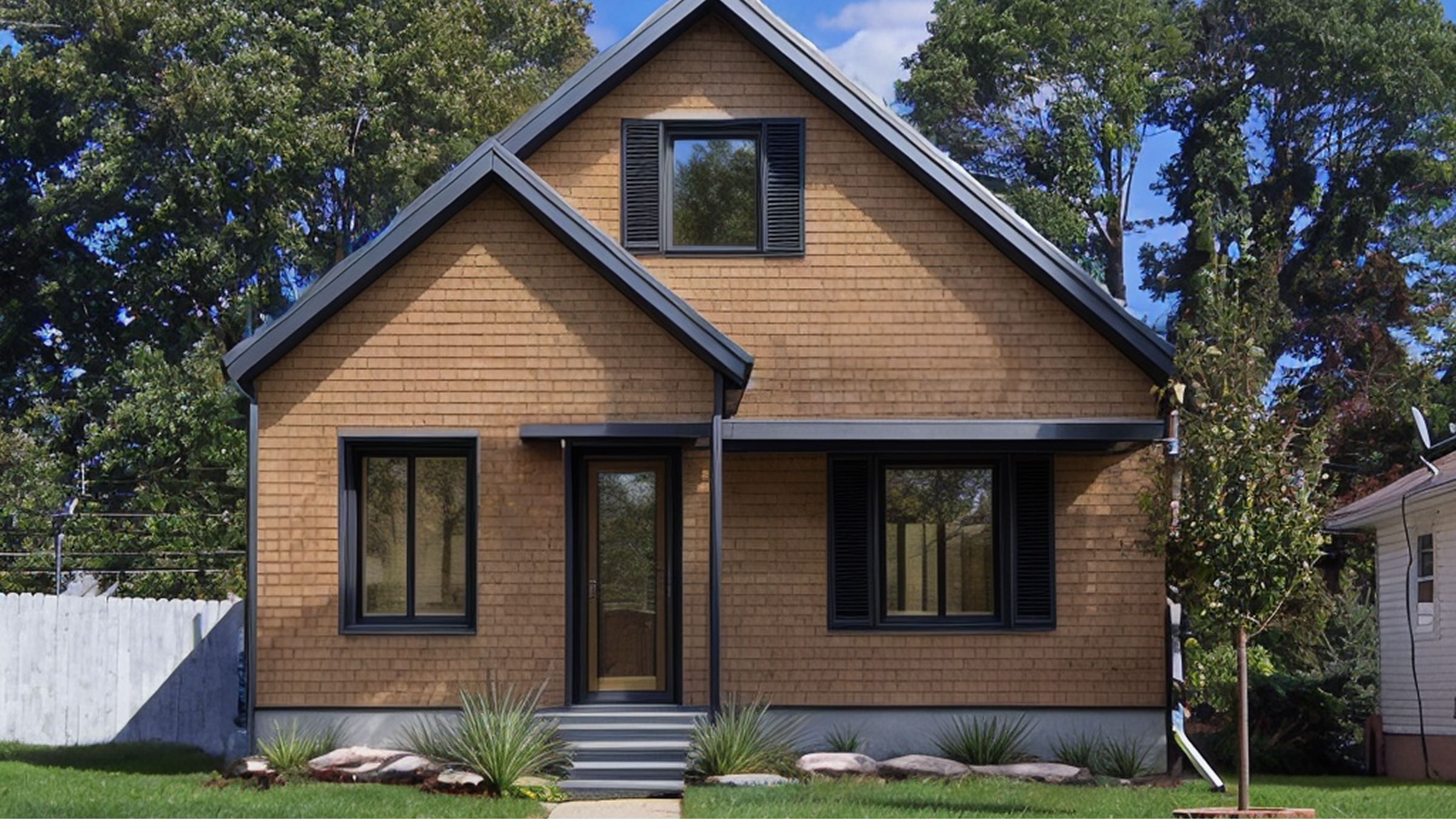Choosing the right roof for your home is crucial, whether you're replacing an old roof or selecting one for a new home.
A roof that complements your home's architecture and meets your personal style preferences is key. With Hover, explore common roof styles, the benefits of different roof structures, and some frequently asked questions to help you decide which roof style is best for your home.
The different styles of roof structures
Gable roof
A gable roof is a simple triangular design with two sides meeting at a ridge. Its popularity stems from its versatility and cost-effectiveness. Gable roofs are excellent for areas with precipitation, as water easily runs off the sloped sides. The space underneath can be used for an attic or vaulted ceilings, but gable roofs are less ideal in hurricane-prone areas unless designed with a 30-degree pitch for added stability.
Hip roof
A hip roof has slopes on all four sides that converge at the top to form a ridge. This design makes most of the roof visible from the street, emphasizing the importance of your roof's color and materials. Hip roofs are ideal for snowy or rainy climates due to their efficient water runoff. The inward slope on all sides also provides added stability.
Gambrel roof
Often called a "barn roof," the gambrel roof has two slopes on each side, with the lower slope being steeper than the upper slope. This design maximizes the usable space under the roof and is commonly seen on barns, farmhouses, and Dutch Colonial-style homes. The ample attic space can be used for storage or as an additional living area.
Mansard roof
Similar to the gambrel roof, the mansard roof features two slopes on all four sides, with the lower slope being much steeper than the upper slope. This French-inspired design allows for maximum use of the upper floor and is often seen in Second Empire-style architecture. The extra space can be used for a loft or additional living quarters.

Flat roof
Flat roofs, despite their name, usually have a slight pitch for water drainage. They are common in modern and contemporary architecture, as well as in commercial buildings. Flat roofs can also serve as green roofs or rooftop gardens, providing additional outdoor living space and environmental benefits.

Which roof style is best?
Choosing the right roof type for your home involves several considerations, including aesthetics, functionality, climate, and budget. The gable roof is the most common due to its simplicity, versatility, and cost-effectiveness. Its triangular shape works well with various home designs and provides efficient water drainage and additional attic space.
For those seeking durability and strength, hip roofs are an excellent choice. Their slopes on all four sides offer superior resistance to wind and snow, making them ideal for regions with harsh weather conditions. The inward slopes also contribute to the roof’s stability, reducing the risk of damage during storms. Additionally, hip roofs allow for the inclusion of dormers, enhancing both aesthetic appeal and functionality by providing extra living space and natural light.
When considering home value, adding dormers to any roof type can significantly boost your property's worth. Dormers increase square footage, improve ventilation, and allow for more natural light, enhancing both curb appeal and interior space. Roof types that add usable space, like mansard and gambrel roofs, are also great options for increasing home value.
Use Hover design tools to visualize your dream home
To eliminate uncertainty, use the Hover app to create customizable 3D models of your home, helping you visualize different roof types and materials before starting your project. You can also use Hover Designer, a free web-based AI design tool, to quickly generate inspiration images -- you can even order photorealistic renderings of your new designs to really bring your ideas to life.
Try Hover web designer here.





-1.jpg)
